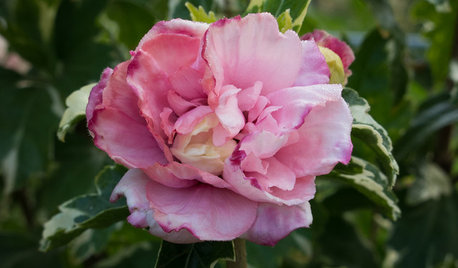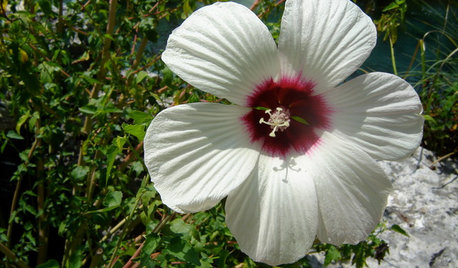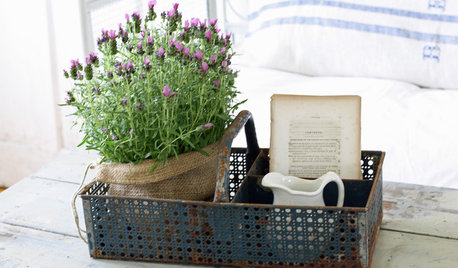Hibiscus - Winter care
paulsm
18 years ago
Related Stories

GARDENING GUIDESGreat Design Plant: Hibiscus Syriacus ‘Sugar Tip’
As pretty as a party dress, ‘Sugar Tip’ has layers of pink that catch the eyes of butterflies
Full Story
GARDENING GUIDESGreat Design Plant: Hibiscus Moscheutos
Crimsoneyed rosemallow is an ideal flowering perennial for wet sites and is ready to propagate now
Full Story
HOUSEPLANTSOutsmart Winter — Make Houseplants of Your Garden Growers
No need to watch Jack Frost play Wreck the Rosemary. Bring your garden inside for the winter, using containers and these guidelines
Full Story
HOUSEPLANTSHow to Force Amaryllis Bulbs Indoors
Enjoy vibrant red blossoms even as gardens turn snowy white, by teaching this hardy repeat performer to ignore the calendar
Full Story
GARDENING GUIDESGarden Myths to Debunk as You Dig This Fall and Rest Over Winter
Termites hate wood mulch, don’t amend soil for trees, avoid gravel in planters — and more nuggets of garden wisdom
Full Story
LIFESimple Pleasures: A Long Winter’s Nap
This time of year we can always use a little extra rest. Make it easy with these ideas for daytime napping
Full Story
SHOP HOUZZShop Houzz: Store Winter Clothes and Gear
Pack and store your winter wardrobe with care, so it will be in good shape for next year
Full Story0

HOUSEKEEPINGOutdoor Home Prep to Do Before Hard Winter Hits
Avoid cracking, rusting and rotting during freezes by taking care of these tasks now
Full Story
GARDENING GUIDESSpring Citrus Care Reaps Months of Sweet Rewards
Learn how to tend citrus trees in spring and ways to preserve their delicious fruit
Full Story
OUTDOOR ACCESSORIESCare Guide: How to Clean Your Patio Cushions
Ready your furniture for spring and summer with these tips for removing sunscreen stains, mildew and more
Full Story



tapla (mid-Michigan, USDA z5b-6a)
newyorker
Related Discussions
care of a hibiscus
Q
Hibiscus Painted Lady Tree Care
Q
Question about hibiscus care.
Q
Hibiscus care over winter
Q
theosof1
jnsbrat
tapla (mid-Michigan, USDA z5b-6a)
jr29
tapla (mid-Michigan, USDA z5b-6a)
tcharles26
eldo1960
paulsmOriginal Author
wcormode
nixonk
greenchic
norm9167
tapla (mid-Michigan, USDA z5b-6a)
ebrown64
so-hooked
tapla (mid-Michigan, USDA z5b-6a)
gringojay
tapla (mid-Michigan, USDA z5b-6a)
gringojay
tapla (mid-Michigan, USDA z5b-6a)
jollimj_staff_ednet_ns_ca
crikket14_yahoo_com
mistascott